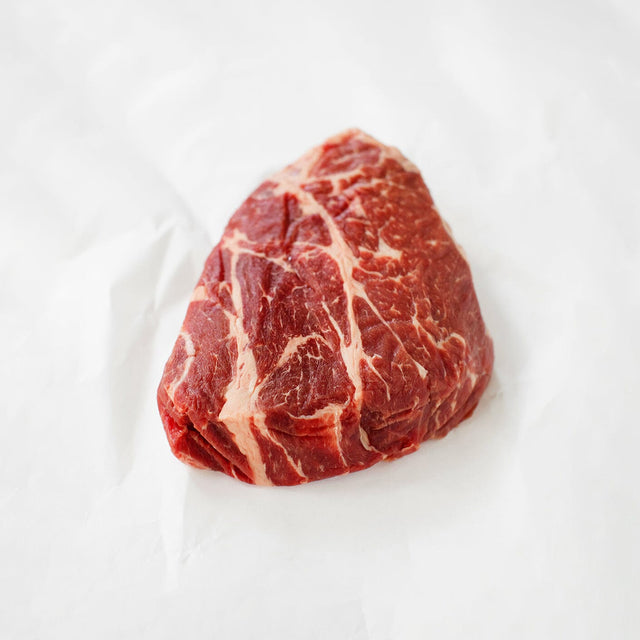What is tenderizing steak, and why is it necessary?
In short, tenderizing steak breaks down the muscle fibers in your chosen cut of meat, and some cuts will need it more than others. While an already-tender USDA Prime filet mignon doesn’t need a massage to be tender, it would still benefit from gently rubbing olive oil, salt, pepper, or other spices into it. Cuts that naturally have more connective tissue, like chuck roast, are tougher by nature and need some tenderizing. There are several ways to accomplish this.
1) Cook low and slow
You’re probably already familiar with how roasts are perfect for the slow cooker. Cooking a chuck roast for many hours in a slow cooker will naturally break down those connective tissues, causing the meat to become more tender. These cuts are often used as stew meat, which simmers for hours on a low fire. While cooking low and slow is all well and good, today’s busy chefs don’t always have hours and hours to wait for the slow cooker or simmering stew to tenderize their meat. That's where salt or an acidic marinade comes in...
2) Use salt or a marinade
Covering your meat in salt or an acidic marinade several hours before cooking is another way to jump-start tenderization. Salt helps break down those tough proteins, but it needs some time to work. If you sprinkle your meat generously with salt (on all sides) up to 24 hours before cooking, it’ll begin the process. Rinse the salt off with cool water before starting to cook. This salt you’ll apply well in advance is for tenderization, not seasoning, so you’ll still need to do that before cooking.
If you go the marinade route, it must contain acid, like citrus juice, buttermilk, or vinegar to accomplish the task. An acidic marinade works magic on meat by breaking down the lean muscle fibers on the surface. However, this will only work with thinner cuts like skirt or flank steak, because the marinade won’t penetrate past the surface layer. Salt (as in the above method) will be better for thicker cuts. Don’t leave the marinade on beef for longer than two hours, as it can break down the fibers too much, leaving you with a mushy mess.
3) Give your meat a massage
This is by far our favorite method, and it also happens to be the quickest and easiest. You don’t need to remember to do it hours in advance (score), and it requires none other than your hands.
All you need to do is wash your hands and give the cut a sports-style massage. Get in there with the heel of your hands moving in circular motions. And remember, there’s no such thing as too much pressure here. Aim to massage each cut for at least 3-4 minutes.
While you’re massaging your meat, you can also rub in spices or a dry rub. The more you massage your spices in, the better your steak will taste. Let the dry rub or spices soak in for 45 minutes before cooking, if possible.
FAQ: Which meats need a massage?
Beef, poultry, pork, and even lamb all benefit from being tenderized prior to cooking.
However, any type of meat will benefit from being tenderized, but tougher cuts need it. There’s nothing worse than looking forward to a nice dinner and finding out your cut of meat is still tough and overly chewy. It can also be embarrassing if it happens while you have guests over. You can avoid this by learning how to tenderize and massage your cuts for the best results. Your guests will love the juicy and satisfying results!
Get the highest quality of meats delivered straight to your doorstep.



